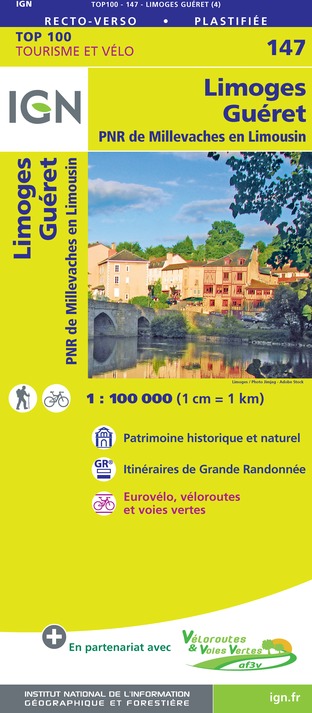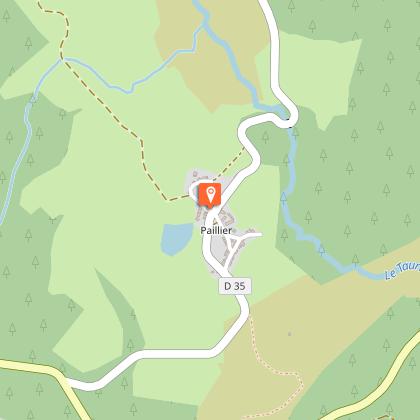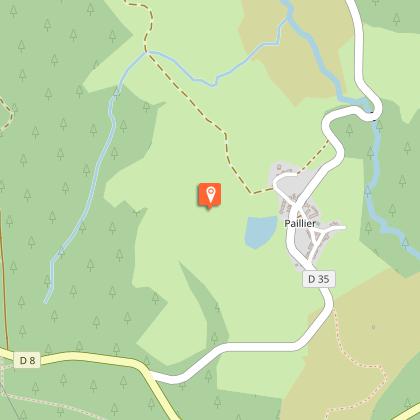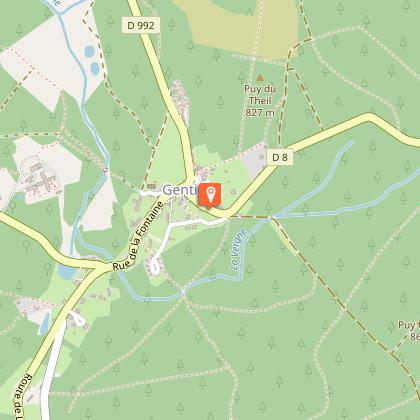Alert
Alerts
Circuit of Pallier

IGN cards





Description
At the foot of the highest peaks of the Millevaches plateau, explore the small village of Pallier.From the Place de la Mairie-école in Gentioux-Pigerolles, turn left by the town hall onto the grassy path that climbs to the edge of the woods. Follow it until you reach an intersection.Continue to the left in the woods, go past two intersections and reach, after a few hundred metres, a crossroads.Take the track on the left and leave the grassy path on the right. Follow it for 2 km. About 200 m after the high-voltage power line, you reach an intersection.Leave the gravel track and follow the path opposite until you find a granite marker on the left.Then turn right: the path climbs slightly upwards to a tarmac-surfaced crossroads. Cross it and continue opposite by the path that goes down to Pallier for 1km. Keep straight on, through woods and meadows, to a crossroads.Take the path on the left to reach the picturesque hamlet of Pallier.In the village, visit the 12th-century chapel. Behind this building are a 16th-century Cross of Calvary fleuronnée, a 19th-century shoeing crush, the notary's house and other village houses. Return to point 6 by the same path.Turn left onto the path bordered by a low wall: it climbs through the pastures before reaching the D8 (watch out for traffic).Take the D8 on the left for 250 m, leaving the D35 on your left, then turn right onto a path that goes downwards. Pass under a high voltage line and reach a crossroads.Leave the path on the right that leads to the quarry, and take the trail on the left that runs alongside the woods and the stream. Pass to the left of a house on a wide road and join the D16 which leads to La Lézioux.Leave on your left the flowered 16th century Cross of Calvary fleuronnée, and take the first path on the right. Go straight up, all the way to the top, granite cross on the right, then go down the long path through the forest until you reach the D8.Follow the D8 on the left until you reach Gentioux-Pigerolles, where the cemetery houses tombs carved by Jean Cacaud.
Technical Information
Altimetric profile
Starting point
Steps
Additional information
Public transport
Public transport >> www.aubusson-felletin-tourisme.com
Advice
Be careful on the D8; it's a busy road!
Advised parking
Place de la Mairie, Gentioux-Pigerolles
Access
22 km from Felletin, take the D992.
Arrival
Place de la Mairie, Gentioux-Pigerolles
Ambiance
Immerse yourself in the history of the Knights Templar who erected a chapel in Pallier in the 12th century. This one offers a very beautiful bell tower-wall facade, whose door framed by two buttresses is surmounted by a broken arch and an armoured tympanum from the 14th century. Behind the chapel is a cemetery with tombstones decorated with a "double besantée" cross, which has a small geometric figure in a circular shape.
Departure
Place de la Mairie, Gentioux-Pigerolles





